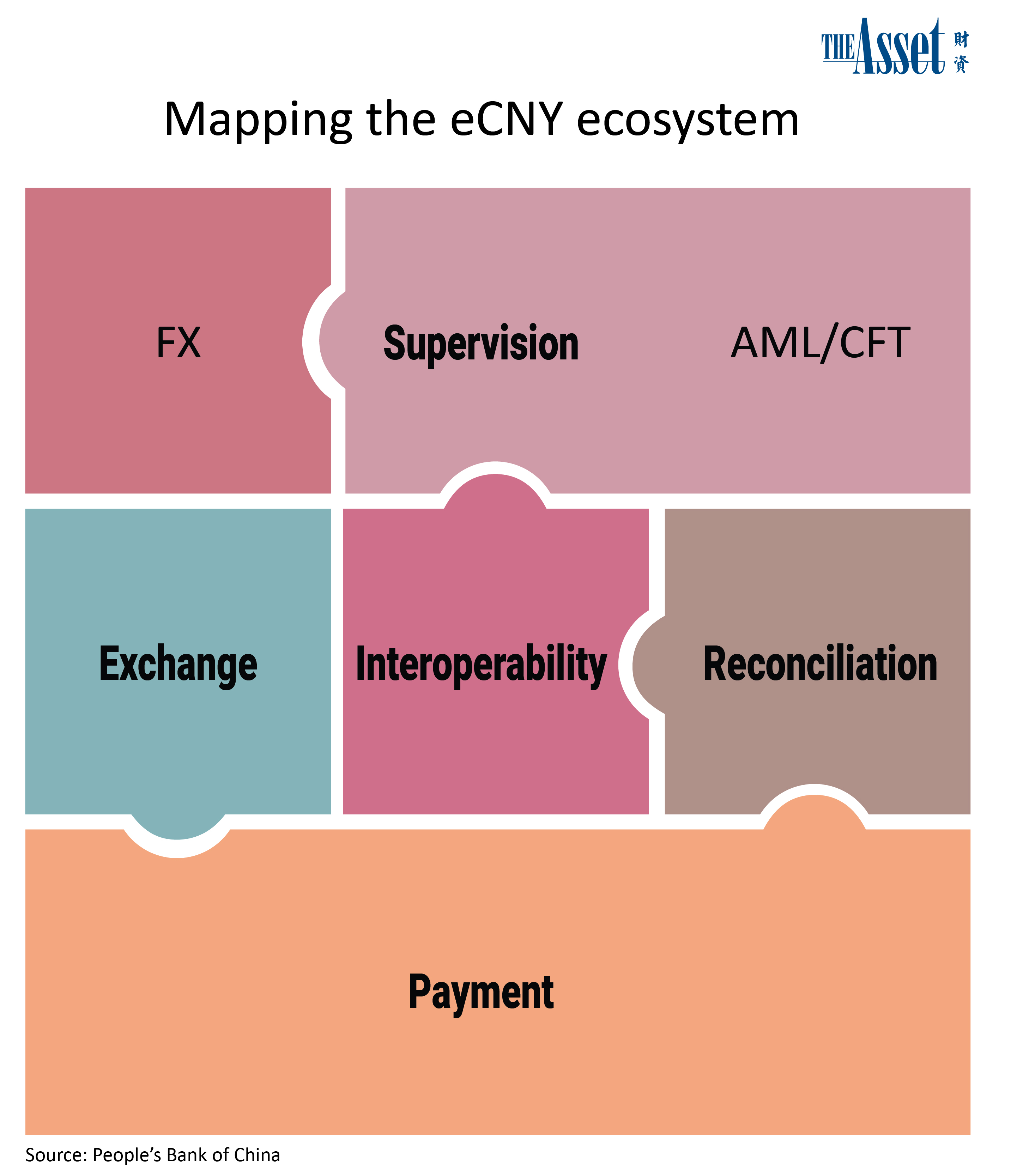
China is ramping up the testing of the eCNY, a central bank digital currency (CBDC), with the number of corporate wallets growing by nearly 75% to 6.13 million as of September 10, from 3.51 million wallets at the end of June 2021. The number of personal wallets now stand at 73.1 million, more than three times the 20.87 million wallets less than three months ago.
Speaking at the annual Budapest Renminbi Initiative Conference hosted by Magyar Nemzeti Bank, the central bank of Hungary, Changchun Mu, director-general of the Institute of Digital Currency at the People’s Bank of China (PBoC), says he expects the eCNY service to be available to visiting athletes participating in the February 2022 Beijing Winter Olympics. “Foreign visitors and athletes will be able to enjoy mobile payment services without the need to open a bank account with a domestic bank,” he relates.
As of September 10, total transactions conducted using the eCNY crossed the 112 million mark with a value of 48.73 billion yuan (US$7.5 billion) compared with 70.75 million transactions and 34.5 billon yuan, respectively, at the end of June 2021. “Use cases of eCNY totalled 2.05 million cases such as for utility payments, catering services, transportation, shopping and government services,” Mu notes.
At the moment, the focus is for eCNY’s use in the domestic retail market but Mu is expecting its application for cross-border payments at some point in the future. Any cross-border use of the eCNY, he stresses, would need to comply with local laws. In the case of Europe, “for example, the eCNY has to comply with the EU General Data Protection Regulation (GDPR) if the service is extended to European residents.”
As a result, he continues, “eCNY service may not be available before the PBoC and the European Central Bank, or the local central bank counterparties, reach a consensus on the CBDC cross-border payments cooperation mechanism”.
For cross-border payments, he explains the worry relates to three aspects: currency substitution, capital controls, and privacy. To address them he quotes a Chinese saying, “don’t do unto others what you don’t want others to do unto you.”
Mu adds, PBoC will be guided by the principles of no disruption, compliance, and interoperability putting a premium on the stability of the international monetary system. “The CBDC supplied by one central bank should not impede other central banks’ ability to carry out its mandate for monetary and financial stability.”
In the case of compliance, “any cross-border arrangements with CBDCs should comply with laws and regulation of the jurisdictions concerned such as capital management, foreign exchange mechanism; information and funds flow could be synchronized so as to facilitate the regulators to monitor transactions for compliance”.

The third principle of interoperability relates to CBDC systems of different jurisdictions with the conversion of the CBDC processed at the virtual border of digital wallets. “A scalable foreign exchange trade platform via distributed ledger technology (DLT) could be established to support the currency conversion for the banks participating in this initiative. The conversion between CBDCs of the different jurisdictions could address worries relating to currency substitution and capital control.”
Currency conversion mechanism on the virtual border between digital wallets of different jurisdictions will protect the monetary sovereignty of each jurisdiction.
The arrangements with the different CBDCs, Mu says, should improve the transparency in cross-border e-commerce and help to address the regulatory pain points in AML (anti-money laundering), safety, customs and tax declarations and capital management, and others.
At the moment, there are a lot of international efforts to solve the cross-border payments’ trilemma of transparency, cost, and efficiency problems, Mu points out. The mCBDC (multiple CBDC) Bridge is part of that effort.
The mCBDC Bridge is a co-creation project under the guidelines of the Bank of International Settlements Innovation Hub in Hong Kong to explore the capabilities of DLT and study the application with CBDCs to enhance financial infrastructure to support multi-currency cross-border payments.
The project, first initiated bilaterally by the Hong Kong Monetary Authority and Bank of Thailand, previously known as Ithanon-Lion Rock Project, was renamed mCBDC Bridge when the BIS Innovation Hub, the Digital Currency Institute of the PBoC, and the Central Bank of the United Arab Emirates joined.
The project, he explains, explores the use of CBDCs to tackle pain points in cross-border fund transfers such as inefficiency, high cost, low transparency, and complexities related to achieving regulatory compliance. The platform also developed a working prototype to support instant cross-border payment versus payment, or PVP, in multiple currencies among multiple jurisdictions to allow the participating central banks to explore the capabilities and the key design challenges of DLT in that context.









